During Medieval times, inflicting pain and torture were an accepted form of punishment or interrogation.
One of the most popular torture devices was called Torture Rack – a sophisticated device that was used to dislocate the bones of a person and eventually tear the person’s limbs apart.
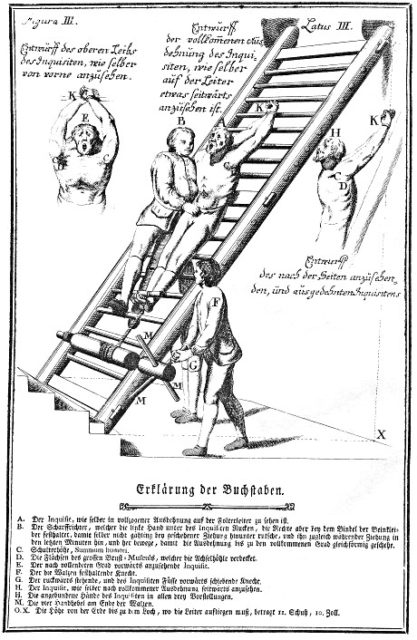
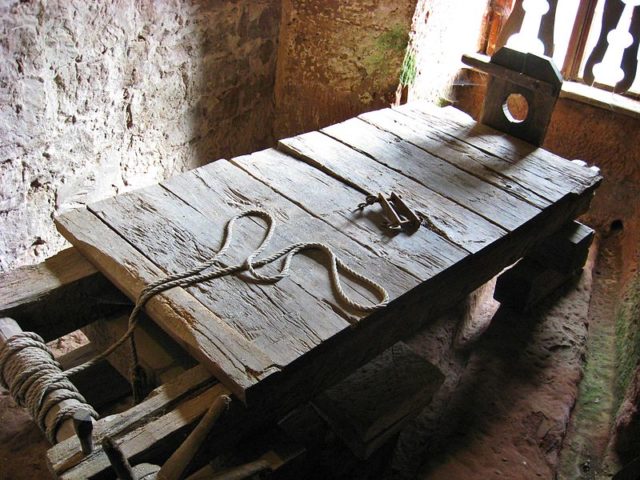
Accounts of such machines date back into Antiquity. For instance, it was used during the time of Emperor Nero to extract the names of conspirators who had hatched a plan to assassinate the emperor in 65AD. However, its most widespread use began during the middle and high medieval times, when the institution of the Inquisition was in full force.
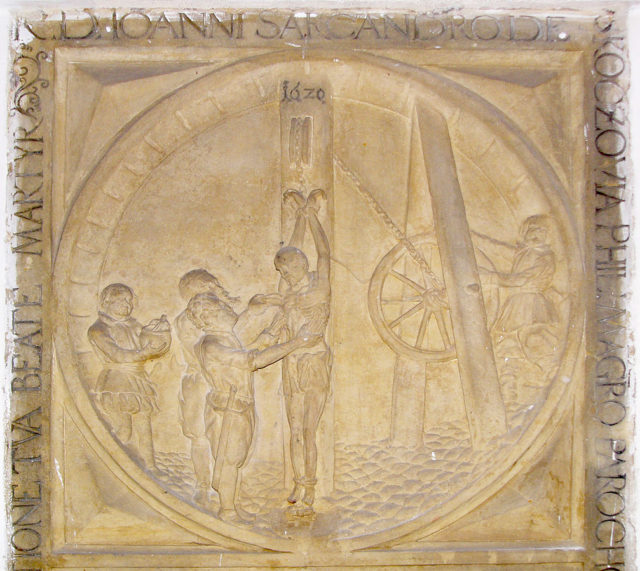
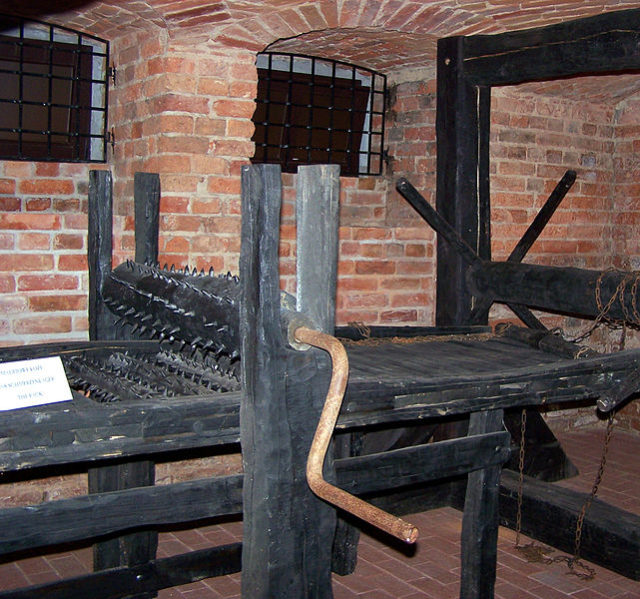
It was a wooden frame usually above ground with two ropes fixed to the bottom and another two tied to a handle in the top.
The victim was positioned on the frame, his ankles were fastened to one roller and the wrists to another. It was designed to stretch the victim’s body, eventually dislocating the limbs and ripping them from their sockets.
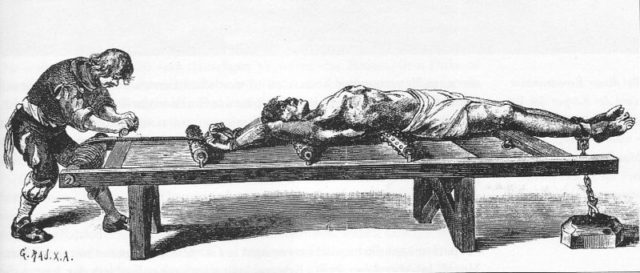
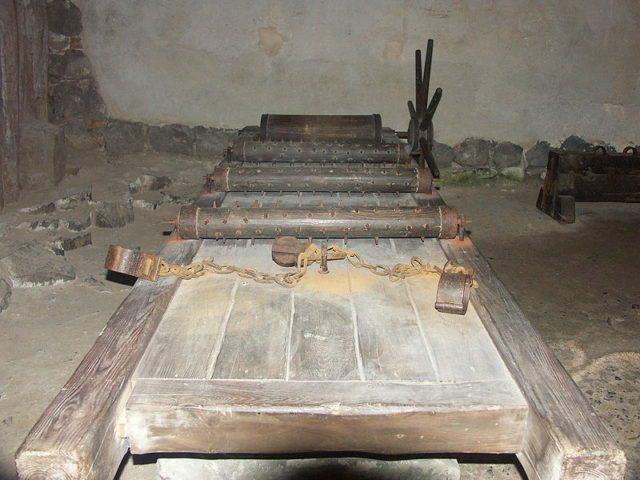
A particular type of the rack was called “The Duke of Exeter’s daughter“, also known as “the brake“. This was a torture rack used in the Tower of London, a well-known place of imprisonment, torture and execution over the centuries, which is said to have been introduced by John Holland, the 2nd Duke of Exeter and the constable of the Tower in 1447. It was reserved for those identified as having committed the most serious of crimes against the state.
the_ad id=”17217″]
The prisoner was shown the rack first and then questioned; if the prisoner refused to answer, the rack was used. Famous victims who were stretched on the rack in England include Guy Fawkes, William Carter, Thomas Kyd and William Wallace (Braveheart).
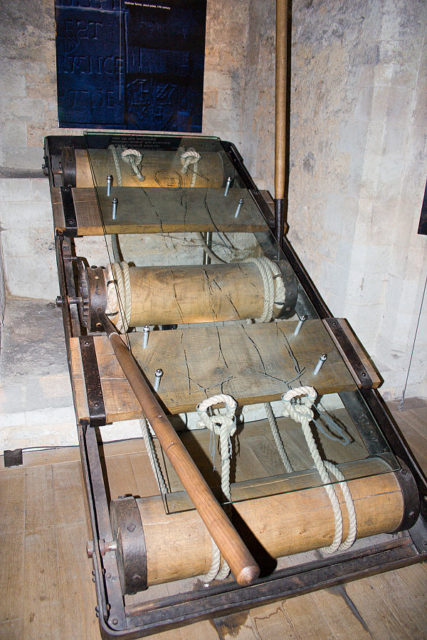
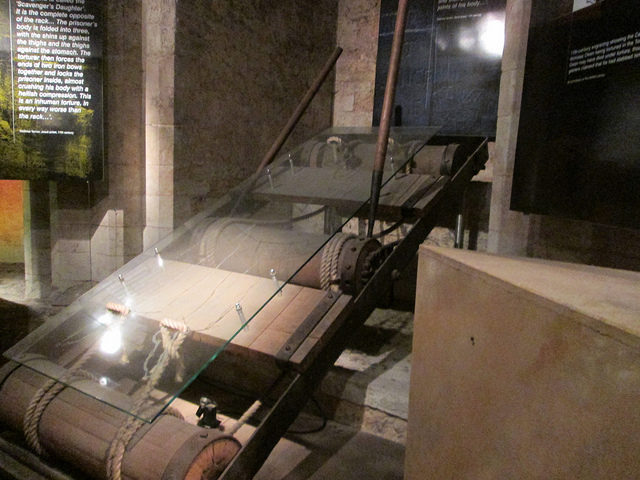
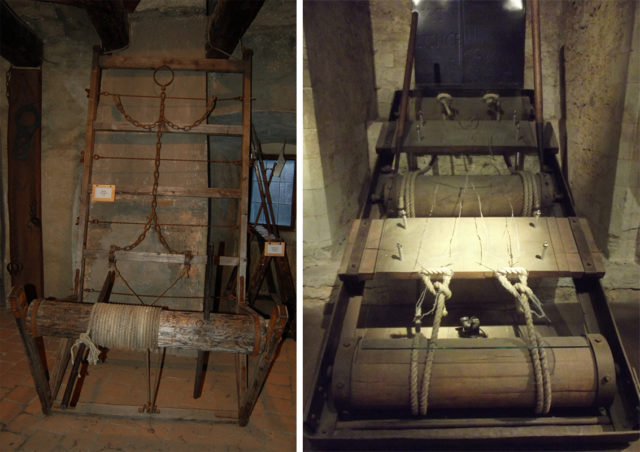
As a result of the criticism that this torture was not only cruel but also ineffective, as a prisoner on the rack would say anything in order to be freed, torture in the Tower of London was abandoned from the mid 17th century onward.
